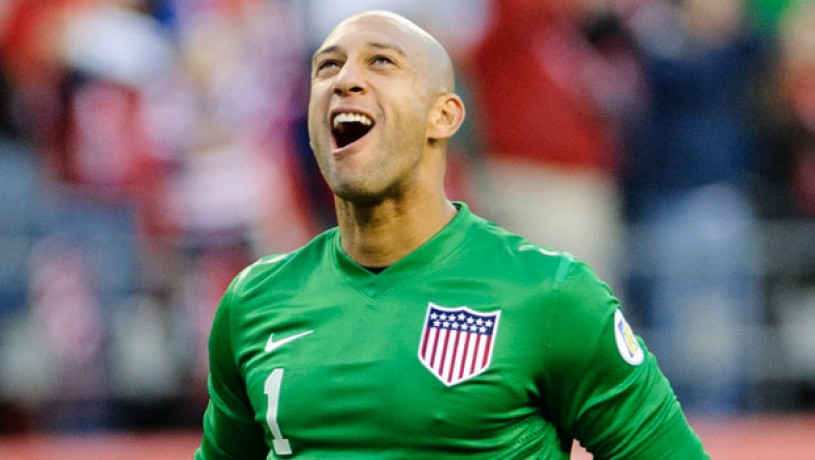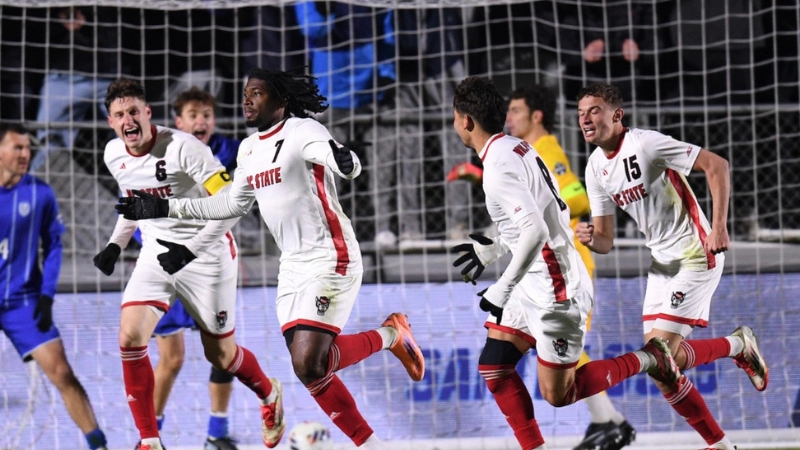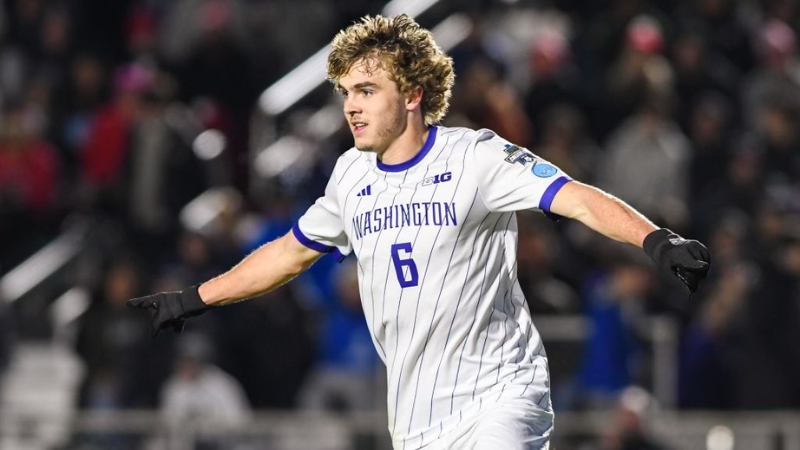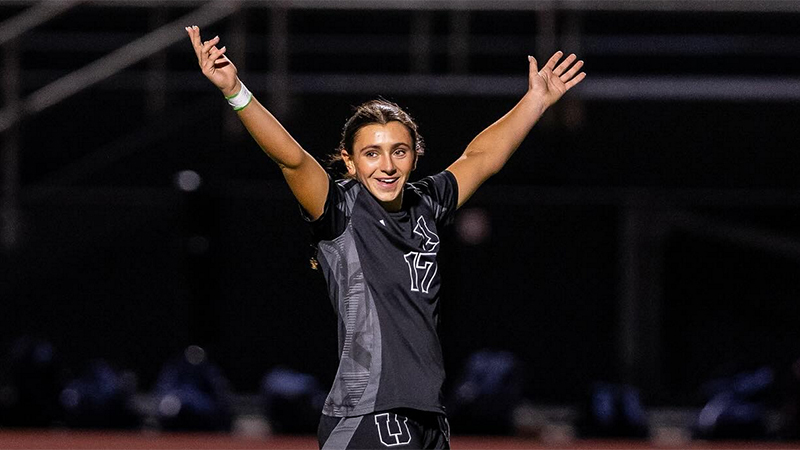USSF struggles to maintain GK dominance

In December, the Wall Street Journal published an article detailing the federation’s shortcomings over the past couple of years, providing insight from former U20 men’s national team coach Tab Ramos. Although a number of concerns were raised, a brief quote from Ramos brought light to the country’s lack of a cohesive goalkeeping program, which would stem from a full-time goalkeeping director. Ramos requested “a goalkeeping program for the youth national teams” but received a tepid response.
In the 107 years of the USSF’s existence, the country has only had one full-time goalkeeping director. In 1997, Peter Mellor, after working with the federation on a per diem basis since 1990, accepted a full-time position with US Soccer. Mellor’s responsibilities could be summed up into two major facets: get the right goalkeepers in the right places and educate the coaching base to develop even more goalkeepers.
“A big part of my role,” says Mellor “was to not just identify the best goalkeepers but, on a coaching education-front, to bring something that would be a license. With the federation, I started to look at the development platform and the ladder that we needed for our youth goalkeepers right through to the pros.”
Working with the NSCAA (now called the United Soccer Coaches), the USSF built off the NSCAA’s goalkeeping courses to provide an advanced course load.
“I put together a program and I went to federation. I had to fight a little bit to get it implemented. I said, ‘Look, the NSCAA already have the level 1 and 2, which is the grassroots, which we all believe in. Why don’t we adopt that as our grassroots level and then I will write a full goalkeeping license for the federation? It’ll be a week-long course.’ So I had to fight to get the two to work together, the NSCAA and federation.”
The course was a resounding success, helping coaches who don’t normally consider the game from a goalkeeper’s point of view understand what they should be expecting from the position and how to integrate the player into the team more fluidly.
“I can’t remember exactly how many coaches we put through but I know it was, over the course of the time we did it, probably four or five hundred coaches. The reviews [for the licensing course] coming back to the federation were fantastic because we encouraged not just goalkeeping coaches to take it but also field coaches. The whole concept of it was, from a goalkeeper’s point of view and my point of view, ‘I want you as a coach to see the game in-to-out of the goal.’ In most cases, coaches are looking from out-to-in and when you stand in and see it through the goalkeeper’s eyes, you’ll see a whole different game.”
Along with a developing, well-thought out infrastructure, Mellor was the driving force behind the golden era in American goalkeeping. Throughout the late 90s and into the 2000s, American goalkeepers flooded the English Premier League with the likes of Brad Friedel, Kasey Keller, Marcus Hahnemann, Tim Howard, and Brad Guzan. Mellor worked with Brianna Scurry and Hope Solo as well, helping establish a dominance in the women's game that other countries simply couldn’t compete with. The youth national teams and domestic leagues were exploding with talent, all of which were products of Mellor’s top-to-bottom approach in goalkeeping education.
To put it in Mellor’s words, “We had it going, it was boiling. We were getting coaching education out and that’s the key.”
Heading into 2005, Mellor had an opportunity to join Real Salt Lake as an assistant coach. Mellor stepped down from his full-time position with US Soccer, assuming the federation would replace him.
“We did that for about eight years and then I got an opportunity in 2005 to go to Real Salt Lake with John Ellinger. I assumed that there and then the federation would replace my position but there was no replacement of a national goalkeeping coach. During a lot of this time I have been working with a guy named Phil Wheddon. I was hoping Phil would be the one to bring on board because he had been very instrumental in a lot of stuff that was going on in the goalkeeping-front with the federation. So for me, it was a no brainer, you know. ‘Okay the old guy Mellor is moving over, get [Phil] in.’ Well it didn’t happen.”
Problems from Mellor’s exit slowly snowballed as the federation’s support behind the licensing dwindled. Over the years, the federation stopped working with the NSCAA and the federation’s goalkeeping licensing was eventually dropped. The cohesive landscape that once existed between the federation and grassroots in goalkeeping education became fractured, stunting development across the country.
“The [USC] is still doing a great job of running their courses but the federation stopped offering the license a few years ago. I understand why, it needed tweaking. The game has changed, goalkeeping has changed. So there were some things, like any other curriculum, needing to be updated.”
While Mellor’s directorial position wasn’t replaced completely, the federation would bring in Phil Wheddon as a full-time coach for the U.S. Men’s National Team from 2005 to 2006, then sliding to the USWNT for 2007 and 2008. The overarching nature of Mellor’s position was divided up between multiple coaches, although certain aspects fell through the cracks. Phil Wheddon, now the Philadelphia Union goalkeeper coach, details his involvement with Mellor.
“Peter was the point person for goalkeeping education and I was lucky enough to be asked by him to join the USSF Coaching staff when I received my A license. Peter used to assign goalkeeper coaches to youth national teams and was responsible for building a staff and sharing information. I will always owe him a tremendous amount as he gave me my start at US Soccer and was a mentor for me. In 2005, I was full-time with US Soccer as the goalkeeper coach for the USMNT. I was also passionate about the goalkeeping education and I still am. When Peter left I assumed the responsibility, informally, to run the goalkeeping education. This consisted of one course held once a year. The National Goalkeeping License ran until January 2015, I believe, and there has been nothing since. I instructed on all but one of the courses, even when I wasn’t full time, and Peter was there as much as he could be.”
In September of 2018, USSF re-launched a goalkeeping course, offering it to only eight MLS goalkeeper coaches but the spirit behind the education has yet to be revived. The target for the federation’s original goalkeeping education was not the top coaches, but the ones climbing the ladder.
“And then suddenly,” Mellor says “the federation is doing something with goalkeeping but it’s MLS-level. But what about where we left off below the MLS level? There’s been nothing done, outside the NSCAA, through the federation. So I feel like we are really hurting now with our goalkeeping. They haven’t seen it coming at the top level. Now we don’t have, like we used to have, a whole string of goalkeepers that were ready to come in, and a big part of that was because our goalkeeping education died.”
Since 2005, the goalkeeper coach position has continually devolved to where it now stands as a part-time position. The coach is selected by the national team head coach but outside of the handful of camps, the goalkeeper coach is working their full-time position, wherever that may be.
“When Peter left the federation,” Wheddon recalls “the situation became what it still is today: each head coach picks a person who they like to be their goalkeeper coach for each camp. So if a head coach likes you and you are available, you typically stay with an age group regardless of your background and qualifications. It used to be stated that you had to have at least a B license to work with national teams but that has been circumvented many times.”
The stress fractures in American goalkeeping have grown all the way to the bottom now as coaches and trainers are left on an island when it comes to developing their goalkeepers. Previously US Soccer was spearheading goalkeeping education and the results showed but now they’re outsourcing the work to whoever is interested.
“There isn’t a US Soccer philosophy or style in which we want to develop goalkeepers. There isn’t a goalkeeping profile and there aren't many goalkeeper coaches scouting or identifying talent and pulling goalkeepers into the national teams. There is no goalkeeping education at all. I was an instructor for [the previously mentioned] pilot course that ran from September 2018 to March 2019 but nothing has happened since.
“The issue is that we have no-one overseeing the development of goalkeepers, there is no standard philosophy, there is no consistent approach to their training and the goalkeeper coaches are not being trained so it is left to chance. We are waiting to see if a goalkeeper materializes in the youth ranks and then can progress with whichever goalkeeper coach the relevant head coach chooses at the time but it seems to be all by chance not by a systematic approach to developing the goalkeepers or coaches.”
The mounting list of problems America has with its goalkeeper situation all leads back to a lack of leadership at the top. Jay Berhalter, the outgoing U.S. Soccer COO, reportedly responded to Ramos' request for a goalkeeping program with "Why would we need a goalkeeping program more than a forwards program?"
Mellor argues that the concept of a goalkeeping director is simply the standard when you compare top international federations.
“I’m very frustrated and I’m very appreciative of everything the federation has given me but I’m very passionate about goalkeeping. To see where we’re at, in terms of goalkeeping development and education with our coaches, I think it’s appalling. Go anywhere in the world, you wouldn’t find a top-class country in soccer without someone heading up and directing the goalkeeping-specific programs.”
The role of a goalkeeping director isn’t easy and one they can’t do by themselves. A network is needed to develop goalkeepers on a country-wide scale. Mellor’s success was not about finding the best goalkeeper by himself, but by establishing a system that empowered both the coaches and young goalkeepers. Phil Wheddon stresses the importance of a team working within a nation’s federation.
“I have been lucky enough to see the goalkeeping system in England and they have a handful of full-time goalkeeper coaches who also work in goalkeeping education and developed a number of goalkeeping courses across the country. These coaches follow a goalkeeping DNA and a similar approach to training in their sessions, delivering a consistent message on how the goalkeeper should play in the England system. They also have goalkeeping-specific scouts who attend goalkeeping events and help assess the goalkeepers and work alongside the full-time goalkeeper coaches.
“In order to produce more goalkeeper coaches and goalkeepers across the country the USSF needs a goalkeeping team and a consistent approach to the position. The country is too big to have just one person doing the job. If we had one person as the director of goalkeeping and then one or even two people in each region and developed a goalkeeping staff, we would have the means to create a goalkeeping pathway for coaches and goalkeepers alike. There have been ID camps and that is great but then who is staffing those camps from a goalkeeping perspective and what are they looking for and from whose direction?”
Without the network and structured route for both players and coaches to progress, the landscape’s fractures prevent even Peter Mellor from being able to help progress a young goalkeeper’s future.
A few years back, after scouting a 14-year old player (who is now a professional), Mellor informed the DA he had found a special talent. Of all the coaches in the country to be able to identify a talented goalkeeper, Mellor’s track record of working with every national team and USYNT goalkeeper for 15 years should be able to speak for itself, but Mellor was met with opposition.
“I spoke to a gentleman at the federation, I explained why I was calling. I told this guy, ‘I’ve never been this excited about a young goalkeeper since I saw Timmy Howard at age 14.’ And you know what his response was? 'Oh well send me his information and I’ll have someone look at him.' I was insulted. I’ve worked with all the top goalkeepers in the country at a period of time. But that’s because, in the DA system, there’s nobody heading up goalkeeping specifically in terms of knowing what’s going on. We have lost a lot of ground with goalkeeping and we continue to lose it.
No one person can fix the US’s goalkeeping woes but the reach of a full-time USSF goalkeeping director can extend down to the grassroots by helping coaches find solutions within a framework, instead of leaving them isolated. The laissez faire attitude from the federation has proven to not work, culminating a massive drought in domestic development. Our best goalkeepers are sent to Europe as soon as possible to become a professional despite there being a time when the US was developing their goalkeepers on their own soil. Restarting Mellor’s campaign of accessible goalkeeping education to help coaches develop goalkeepers properly and by an agreed upon standard from the federation would place the US back on a familiar track, one where they’ve been before.
“The formula is easy,” Wheddon says “Develop the coaches and they develop the goalkeepers.”
Headlines
- Recruiting Roundup: December 8-14
- High School All-American Games Stream
- How Do I Get Scouted by TopDrawerSoccer?
- 2026 Women's Division I Transfer Tracker
- NC State Advances to First College Cup Final
- Washington Dominates College Cup Semifinal
-
GA Showcase/Champions Cup Goal Scorers

- TopDrawerSoccer TeamRank Update - Boys
-
High School All-American Game Preview

-
ECNL Girls New England Players to Know




